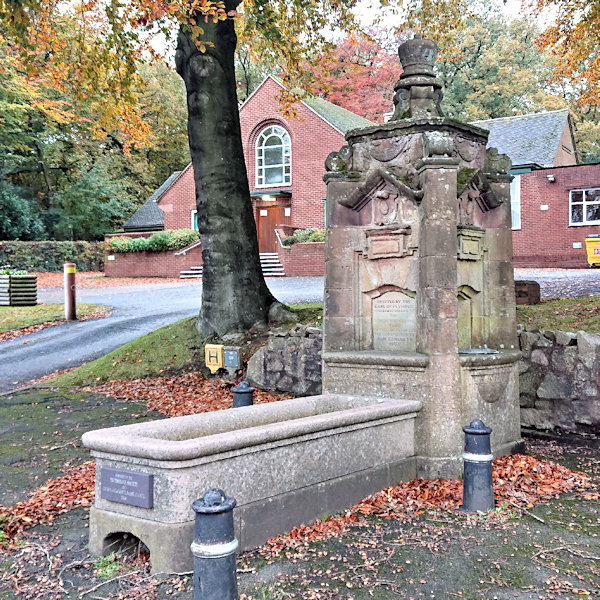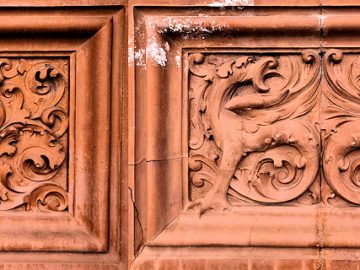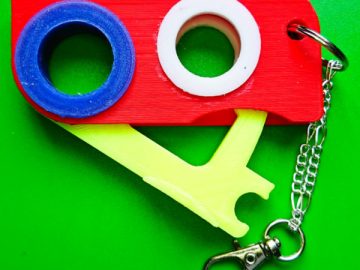This is just a fun 3D model of a hairy pigs head. Not much more than that can be said really, except that it was created from some fun 3D sculpting practice in the excellent Nomad Sculpt Android app. So it’s intended simply as an opportunity for a bit of relaxing 3D printing and model painting (a stand being included in the download links to help with that) for your creative downtime. Any resemblance to a certain Miss Piggy is therefore wholly unintentional, although some people have said it looks a bit like her (probably all those Jim Henson Muppet shows I saw as a kid in the 1970s got fused into my psyche, to emerge when I least expected it during a bit of 3D sculpting).
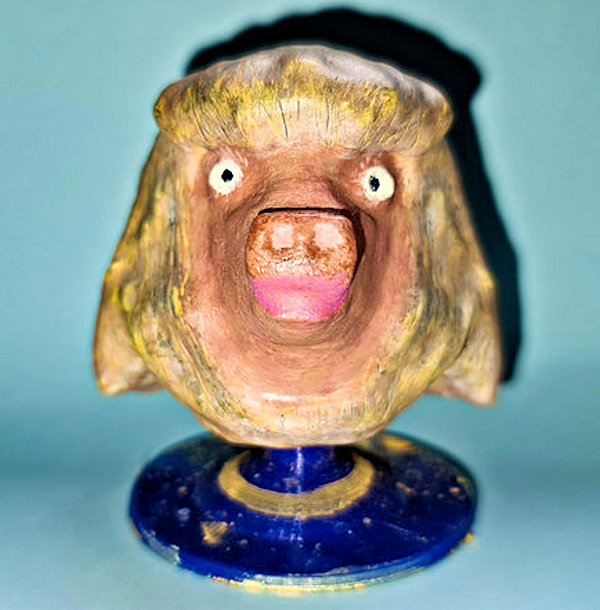
Quick summary of this 3D creation
Overview: A simple digital 3D sculpt of a hairy pigs head.
Location: Not applicable.
Date/era: Modern, 21st Century.
Software used: Nomad Sculpt Andoid app, OpenSCAD, Meshmixer.
Intended use: 3D printing with fused filament printers, with a painting stand that can be printed without support material.
The model was made with the excellent Nomad Sculpt Android app. Nomad Sculpt brings a complete 3D sculpting environment to Android devices and, with support for devices with pen/stylus support, allows excellent control through pressure sensitivity. There are many ways to go about sculpting a model like this in Nomad Sculpt, but after careful consideration of the options it was made using ‘subtractive’ modelling, starting with a sphere of ‘clay’ and progressively removing material with the clay brush (with negative effect set so as to remove, rather than add, material) toward the desired shape. That started by removing material around the nose area, first creating simply a rough shape onto which details were then carved in more detail.
For carving the small details the ‘subtractive’ clay brush can obviously be used. But, for finer details, the crease tool is also very useful, and can be used at quite small sizes: and you can vary the size of the brush to give a more realistic result. The hair hanging down at the back was then added using the drag and move tools, which is much easier than carving away material. And, of course, the smooth brush was invaluable to tidy up the untidy bits the other tools caused, leaving a smooth and hopefully quite natural look. The stand was then made in OpenSCAD, out of simple cylinder and cone primitives joined together in a union, and was designed not to require any support material. You can see the model of the head being sculpted in Nomad Sculpt in the screenshot below, from a Samsung Tab 6 Lite Android tablet.
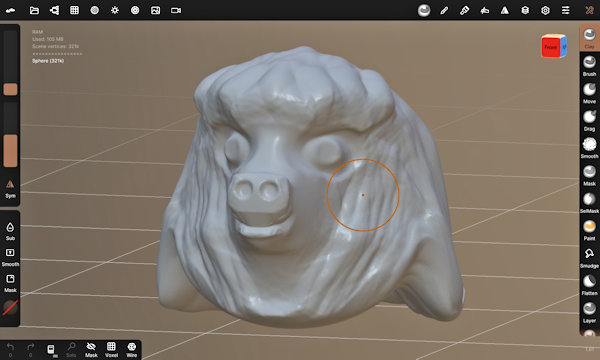
The finished sculpt was then post-processed using Meshmixer to remesh to a sensible file size. That was very important as the need to use a high polygon count in Nomad Sculpt, in order to carve out fine details and sharp edges, results in a large file size. Obviously that may not be important for many purposes, but it does mean it loads quicker in the Sketchfab viewer, and downloads faster too. Remeshing was based on the Meshmixer solidify tool and the sharp edge preserving setting was used to help ensure few fine details, and of course sharp edges, were lost. Meshmixer was also used to make the head hollow, so that the painting stand can be inserted through the neck. You can see the finished model on Sketchfab below (click the play button to load the model and view it in 3D).
The model in the photo was printed in Flashforge PLA on one of their Adventurer 3C printers. Printed upright on fused-plastic printers it should need minimal support material, the small amount needed being mainly to hold up the snout, which is easily removed and filed away, and the rest to hold up the upper inside surfaces of the hollowed out areas. The stand should require no support material if printed upright, as it was designed not to have any sharp overhangs that would create a need for it. The finished model was then painted using The Army Painter Warpaints, and some fine pens, before being varnished.
However, pretty much any type of paint that adheres well enough to your choice of filament, such as maybe craft acrylics, should work well too. And, the model should print very well in resin as well if you prefer, but given the limited amount of fine details that wasn’t considered necessary for this project and so wasn’t tested. If you’d like to 3D print this project yourself, to sit on your shelf or coffee table, you can click here to go to the Thingiverse page to download it.
So finally, in case you’d like to use the methods in this project for your own work, let’s recap on what was involved:
- The Nomad Sculpt Android app was used to sculpt the 3D model, starting with a spherical block of ‘clay’ and removing material toward the desired shape.
- The smooth brush was needed to help keep the surfaces uniform and ensure the finish looked natural.
- The crease tool was very important as it allowed creation of sharp features and carving of finer features such as hair.
- The drag and move brushes allowed easy creation of the base of the hair, it being pulled down from the spherical block.
- On a PC Meshmixer was used to solidify/remesh the model, to achieve a much smaller file size and to hollow it for insertion of a painting stand.
- The painting stand was created in OpenSCAD, using cylinder and cone primitives, with no sharp overhangs that would require support material when printed upright.
- The finished 3D model was then test printed in PLA, and found to print to an acceptable quality.
- Due to the lack of very fine detail in the model, resin printing was not considered necessary for creation of a good 3D print.
Please note that this design is provided without any license for commercial use. It is intended simply as a model you can have the fun of printing and, maybe, painting yourself.

